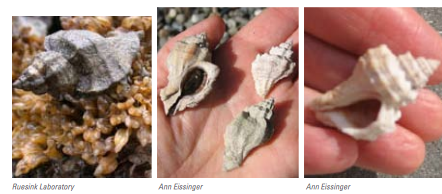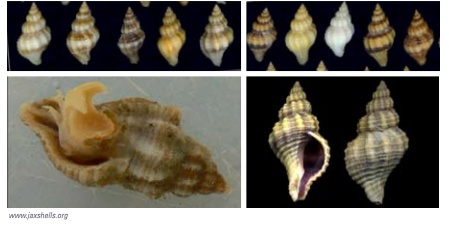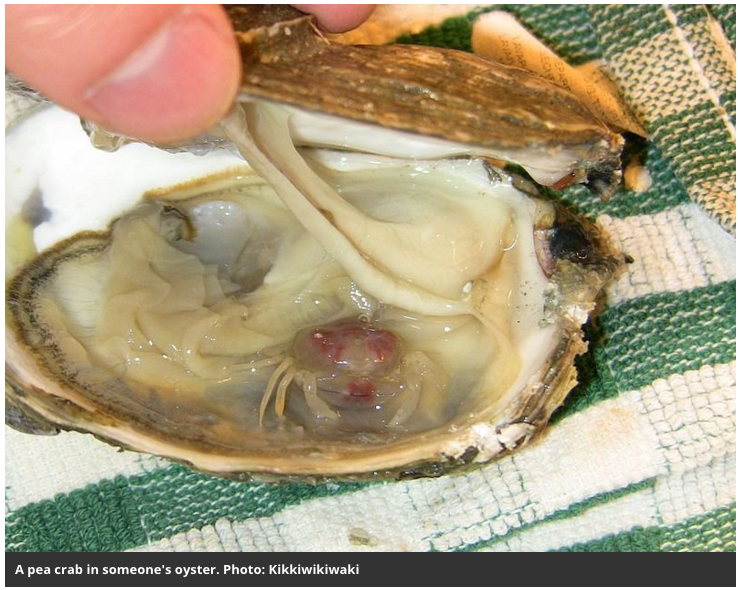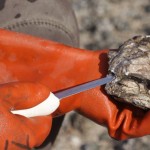Though oysters are essentially living, breathing rocks, they are susceptible to predators and diseases. Some of the diseases affect the oyster itself, some just the animals that eat them. Following is a brief overview of some of the major predator, parasites, or diseases of the Pacific oyster (Crassostrea gigas), the Eastern oyster (Crassostrea virginica) and the Olympia oyster (Ostrea lurida). Threats to oysters, of course, will vary by region and production method, so some commercial operations may experience increased or decreased effects. Many are invasive species introduced to the area.
Japanese oyster drill (Ocinebrellus inornatus) – a narrow and elongate, <5cm long gastropod (snail); native to Asia and present in Puget Sound; feeds on young oysters by drilling a 1/16th-inch hole in the shell; egg masses distinguished from native welk (N. lamellosa) by their edges

Source: Marine Invasive Species Identification Guide for the Puget Sound Area, from the Puget Sound Marine Invasive Species Volunteer Monitoring Program
Atlantic/Eastern oyster drill (Urosalpinx cinerea) – native to northwestern Atlantic; identifiable by whorls on shell; feeds on mollusks; lives in intertidal to shellow subtidal zones, can live in salinities as low as 13-15 ppt; 30-35 mm length

Source: Marine Invasive Species Identification Guide for the Puget Sound Area, from the Puget Sound Marine Invasive Species Volunteer Monitoring Program
Other predators: Cownose Rays, Mud crabs, Blue crabs, Humans, Oyster toadfish, Bluefish, Striped Bass, Rapa whelk, Knobbed whelk, Channelled whelk
Parasites:
“dermo disease” caused by the Perkinsus marinus protistan parasite affecting oysters when temperature is high and living/multiplying in the oyster’s digestive tract until the oyster dies (usually within a year)
“MSX disease” caused by the Haplosporidium nelsoni protozoan parasite affecting first the oyster’s gill and mouth tissue before spreading to other cells; enhanced by higher salinities
“pea crabs or oyster crabs” the kleptoparasite soft-bodied crab (Pinnotheres ostreum or Zaops ostreus) living in the gills of mussels and oysters; oyster crabs don’t generally affect an oyster’s health, except if food availability decreases significantly






Leave a Reply